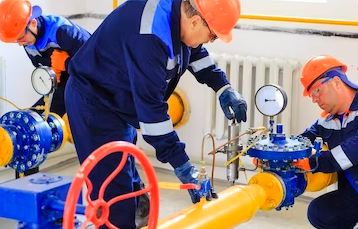Maintaining the condition of waste and storm water systems is essential for the proper functioning of infrastructure and the protection of the environment. These systems often consist of intricate networks of pipes and channels that are susceptible to various issues, such as blockages, leaks, and structural damage. To effectively manage and maintain these systems, property owners and municipalities have turned to video inspection technology as a valuable tool. By inserting a camera into the pipes, video inspection allows for a detailed examination of the system’s interior, providing crucial information for identifying hidden issues and ensuring timely maintenance. In this blog, we will explore five compelling reasons why video inspection is a beneficial practice for the condition of waste and storm water systems.
1. Identifying Hidden Issues
One of the key benefits of video inspection technology is its ability to identify hidden issues within waste and storm water systems. By inserting a camera into the pipes, technicians can visually examine the interior of the system, providing a clear picture of its condition. This process allows for the identification of cracks, leaks, blockages, or root intrusions that may not be immediately visible. Detecting these issues early on is crucial as it helps prevent major problems and costly repairs in the future. By addressing these hidden issues promptly, property owners can avoid potential damage and ensure the longevity of their waste and storm water systems.
2. Efficient Maintenance Planning
Video inspection plays a crucial role in efficient maintenance planning for waste and storm water systems. By conducting regular inspections, technicians can assess the overall condition of the system and prioritize necessary repairs or replacements. The detailed information obtained through video inspection helps in determining the severity of issues found and the urgency of action required. This proactive approach ensures that resources are allocated effectively, saving time and minimizing disruption to the surrounding areas. By planning maintenance activities based on accurate and up-to-date information, property owners can effectively manage their waste and storm water systems, reducing the risk of unexpected failures or emergencies.
3. Enhanced System Performance
Regular video inspections contribute to the enhanced performance of waste and storm water systems. Over time, these systems may experience blockages, obstructions, or buildup of debris, which can impede the flow of water. Video inspection technology allows technicians to identify these issues and take necessary action to restore the system’s functionality. By removing blockages, clearing obstructions, or performing maintenance tasks such as descaling, the flow of water is improved, reducing the risk of backups or flooding. Ensuring optimal system performance not only prevents property damage but also minimizes the potential for environmental contamination. By investing in regular video inspections, property owners can maintain the efficiency of their waste and storm water systems, promoting a healthier and more sustainable environment.
4. Cost Savings
Video inspection technology offers significant cost savings in the long run. By detecting issues early on, video inspections help property owners avoid major problems that may require extensive repairs or replacements. Timely identification of cracks, leaks, or structural damage allows for prompt action, preventing the issues from escalating. By addressing these problems in their early stages, property owners can avoid more significant damage, which often results in costly repairs and disruptions. Additionally, video inspections help prevent property damage that could be caused by clogged or malfunctioning waste and storm water systems. By investing in regular video inspections, property owners can save money by avoiding expensive repairs, preserving the value of their properties, and minimizing potential liabilities.
5. Compliance with Regulations
Maintaining waste and storm water systems in good condition is not only important for the system’s performance but also for meeting regulatory requirements. Local, state, and federal regulations often have specific guidelines and standards for the maintenance of these systems to ensure environmental and public health protection. Video inspection provides a comprehensive documentation of the system’s condition, which can be used to demonstrate compliance during inspections. The recorded videos and reports generated through video inspection technology serve as valuable evidence of ongoing maintenance efforts. By investing in regular video inspections and maintaining a record of these inspections, property owners can demonstrate their commitment to complying with environmental and safety regulations.
Conclusion
Video inspection technology has become an indispensable tool for maintaining waste and storm water systems. It enables the early detection of hidden issues, facilitates efficient maintenance planning, enhances system performance, saves costs, and ensures compliance with regulations. By investing in regular video inspections, property owners can prevent major problems, minimize damage, and contribute to a healthier and more sustainable environment. Video inspection is a proactive approach that offers significant benefits in terms of system longevity, operational efficiency, and environmental protection. Embracing this technology is crucial for the effective management and maintenance of waste and storm water systems in the modern era.

